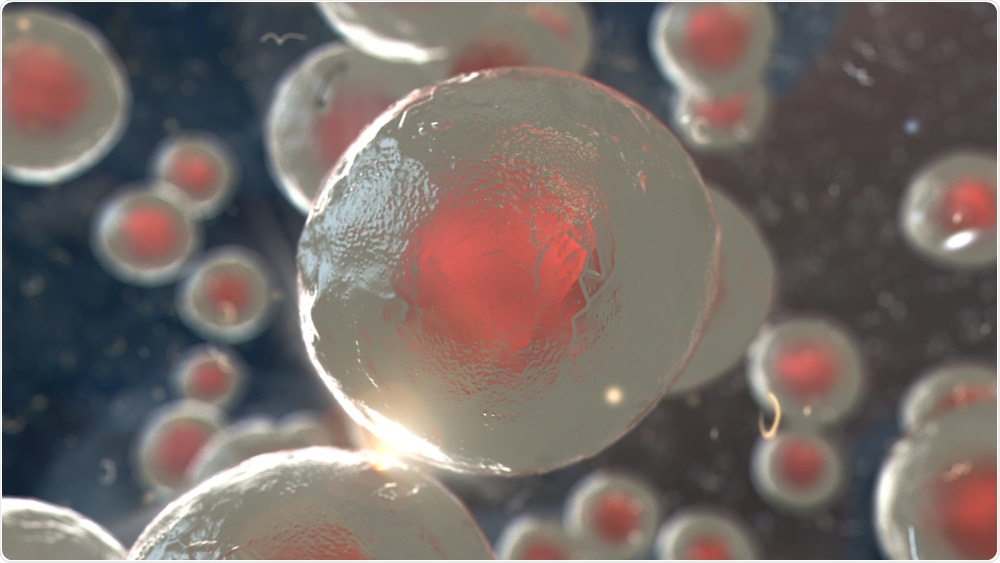Using induced pluripotent stem cells (iPS), a Japanese research group at Cincinnati Children’s Hospital Medical Center have successfully grown a connected set of organs at the same time, including a liver and a pancreas connected by a bile duct. Their success has important implications in precision medicine, organ supply, and the treatment of liver diseases.
 YuriiHrb | Shutterstock
YuriiHrb | Shutterstock
IPS cells are a type of stem cell that can be grown directly from adult cells. They are an extremely promising tool in regenerative medicine as they are able to develop into any kind of cell in the body, from neurons and heart cells to pancreatic and liver cells.
Scientists are able to create organoids from these iPS cells, which are tiny versions of human organs that are able to carry out the functions of multiple types of cell, opening up a wealth of opportunities for research.
Publishing their work in Nature, the research group, led by Professor Takanori Takebe, MD, cultured iPS cells until they reached the stage just before they become digestive organs.
An unexpected success
In order to grow these organoids, Takebe and his team began the process with human skin cells, converting them into primitive stem cells and culturing them until they formed two “spheroids” of cells that were classified as an early form of the foregut and the midgut.
Once the spheroids had reached maturity, they were placed together in a solution containing a growth medium membrane.
“From this point, the cells knew what to do,” Takebe said.
The cells made contact with each other and began to convert into more specialized cells, a process made visible by chemical tags attached to them.
After 70 days, the cells had become organoids capable of processing bile acids in the same way the human digestive tract digests and filters food.
This was completely unexpected. We thought we would need to add ingredients or other factors to push this process. Not trying to control this biological process led us to this success.”
Hiroyuki Koike, First Author
Along with the fact that the researchers were able to confirm that the organoids were capable of producing liquid that flowed from the liver to the bile ducts and the pancreas, their work also marks the first time that organoids have been produced simultaneously in an entirely connected formation.
“The connectivity is the most important part of this,” Takebe said. “What we have done is design a method for producing pre-organ formation stage tissues so that they can develop naturally. We are maximizing our capacity to make multiple organs much like our body does.”
An unprecedented opportunity
If the researchers are able to progress these results and create blood vessels at the same time as connected organoids, they could be used as organ transplants in humans, marking an important advancement in the potential to increase organ supply through growing organs in labs instead of relying on human donorship and animal research projects.
This ground-breaking work is the result of five years’ of work by Takebe, who refocused from becoming a liver transplant surgeon to working on closing the gap between organ demand and organ supply.
Working with first author of the study Hiroyuki Koike, Ph.D., who now works at Japan’s Nippon Medical School, Takebe has been able to produce results that Aaron Zorn, Ph.D., the Director of the Center for Stem Cell and Organoid Medicine (CuSTOM) at Cincinnati Children’s Hospital Medical Center, describes as an “unprecedented opportunity to study normal human development” from a research perspective.
“The real breakthrough here was to be able to make an integrated organ system,” said Koike, as connected organoids provide a much better picture for patient diagnoses and customized treatments.
Because of this, the work has implications in precision medicine, the ability to develop drugs that treat babies after birth, and the ability to study gene variations and their effect on organ development during pregnancy.
Current liver regenerative medicine approaches suffer from the absence of bile duct connectivity. While much work remains before we can begin human clinical trials, our multi-organoid transplant system is poised to solve this issue and may someday provide a life-long cure for patients with liver diseases.”
Professor Takanori Takebe, Lead Researcher
Journal reference:
Koike, H., et al. (2019). Modelling human hepato-biliary-pancreatic organogenesis from the foregut–midgut boundary. Nature. https://www.nature.com/articles/s41586-019-1598-0